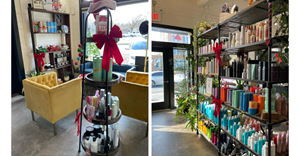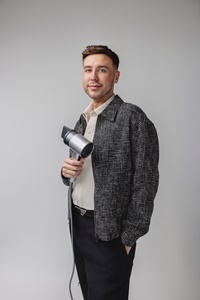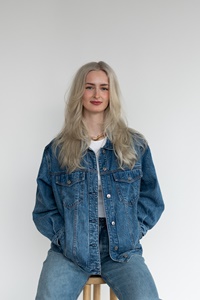Service add-ons—like gloss treatments, bonders, and deep conditioning treatments—are one of the easiest ways to boost your bottom line while also keeping your clients’ hair looking its best. Service extras offer guests a variety of customizable options to help them achieve their hair goals. But to make these extras as profitable as possible, establishing correct pricing is essential.
“When it comes to add-ons, deciding on an appropriate price can be tricky,” says stylist Brittnay Roller (@brittnaydidit). “There are a few main things I take into account when pricing, like how much time the add-on will increase the overall service.” She also factors in the amount of product used—whether it’s by a substantial amount, and if it will drastically enhance or alter the overall style in a way that couldn’t be done without the add-on.
Ahead, we tapped several salon owners and stylists to get the lowdown on their preferred strategies and methods when pricing add-on services.

Credit: Instagram/@amikapro
How To Price Service Add-Ons
Time-Based Pricing
One of the most popular approaches is to charge based on the amount of time spent performing the add-on service plus cost of the product used. For example, some stylists prefer to charge an hourly rate for any add-on that takes more than five minutes, building in the price of product and taking into account hair length, density, and the type of service.
Product-Based Pricing
Another popular method for add-on pricing is to charge based on the cost of the product used. For glossing services, you can add the cost of one bowl of gloss into the price of any basic lightening service. Or when pricing custom lightening services like balayage, ombré, faux balayage, and root smudges, you can build in the price of two add-ons into your base price to ensure you’re fairly compensated for product usage while still being able to fully customize your approach for each client.
Service-Based Pricing
“I charge by the service, and add on for additional thickness of the hair or product being used,” says Tampa-based stylist Aoife Carr (@blendedblondes). When calculating extras, it can be helpful to set a minimum charge and stick to clean, even numbers, like $10 or $20 extra for thicker hair. This approach can help keep pricing simple both for you and your clients, who will typically feel more comfortable with a predictable and transparent approach to extra charges.
Market-Based Pricing
Pricing your add-on services effectively will require a bit of homework on your part—especially if you’re opening your own salon or salon suite. When Phillip Rosado (@philliprosado) and his wife Alicia (@aliciar.rosado) opened their Orlando-based salon, Educe Salon (@educesalon), they remember pricing being the first thing they looked at. “We considered three major things: national averages, local averages, and L’Oréal Professionnel brand recommendations since we’re a L’Oréal Professionnel salon.”
.png)
Credit: Instagram/@maneandtayl
All-Inclusive Color Pricing
When it comes to color service extras, Carr prefers to build these costs directly into the color service. “A glaze is always built into the price of a highlight,” she says. Since most clients will need a glossing service to achieve the perfect tone, this approach can provide a stress-free, all-inclusive experience for your color clients and help promote repeat business.
Bond Builder-Inclusive Pricing
At Joseph Hair Salon in England, bond builder is included in the price of every lightening service. “We don’t feel it should be optional,” says Salon Director Charlotte Lathbury (@josephhairsalon). “Then, for every other add-on service, we charge extra as it requires more time. We make sure our clients know how much everything is so they can make informed choices and I can ensure the bookings are timed properly.”
Adding the price of bond builders into every lightening service is a great way to ensure that your clients’ hair remains shiny, smooth, and healthy-looking. And it’s also an excellent opportunity to educate your clients on at-home haircare while promoting your favorite bond building retail products.
.png)
Credit: Instagram/@olaplex
À La Carte Maintenance
“I feel my most successful add-on options come from my à la carte maintenance menu,” says San Diego-based stylist and balayage specialist Lanisa Chacon (@hairpaintingdiaries). She recommends a gloss refresher approximately four to five weeks after her clients’ initial color service (about $65), then offers a menu of fully customizable, à la carte add-ons—including the option to add a bonder to the gloss ($15), a bang trim ($20), a blow dry style ($55), or a shine treatment ($25).
“Offering this exclusive menu for returning guests means clients come back more often, which is helpful because today’s blended and rooted color trends look good for so long without retouching,” she says.
Remember: Easy numbers work better for clients, and they will typically feel more comfortable during the service if they know what you will be charging in advance.


.png?mw=300&mh=300&as=1)
.png?mw=300&mh=300&as=1)



